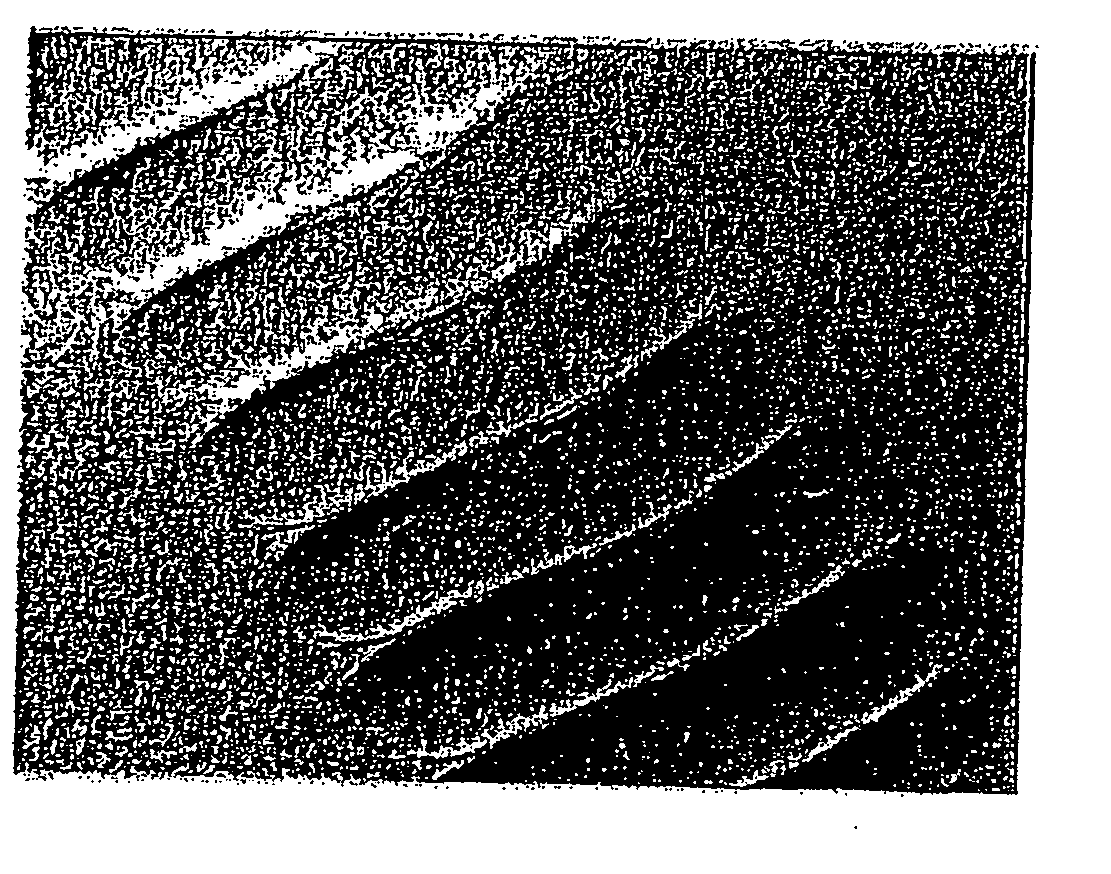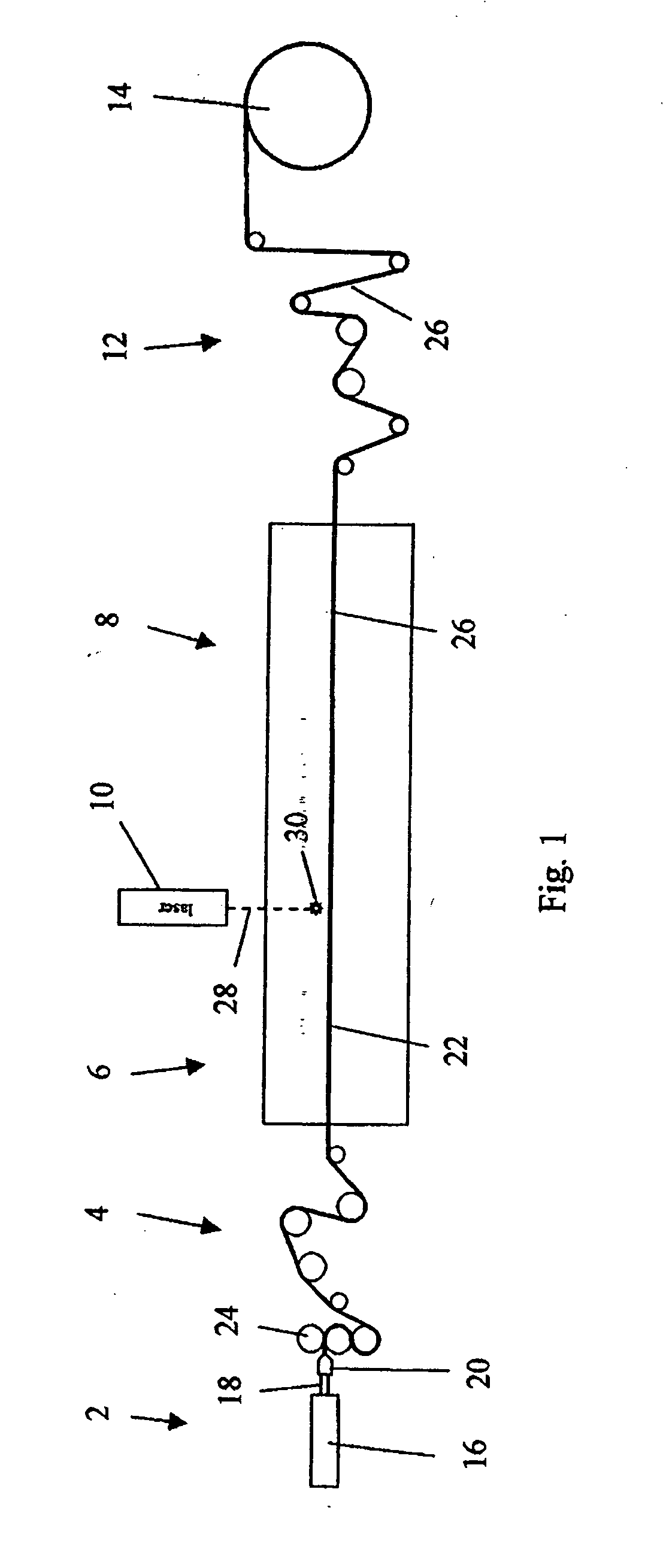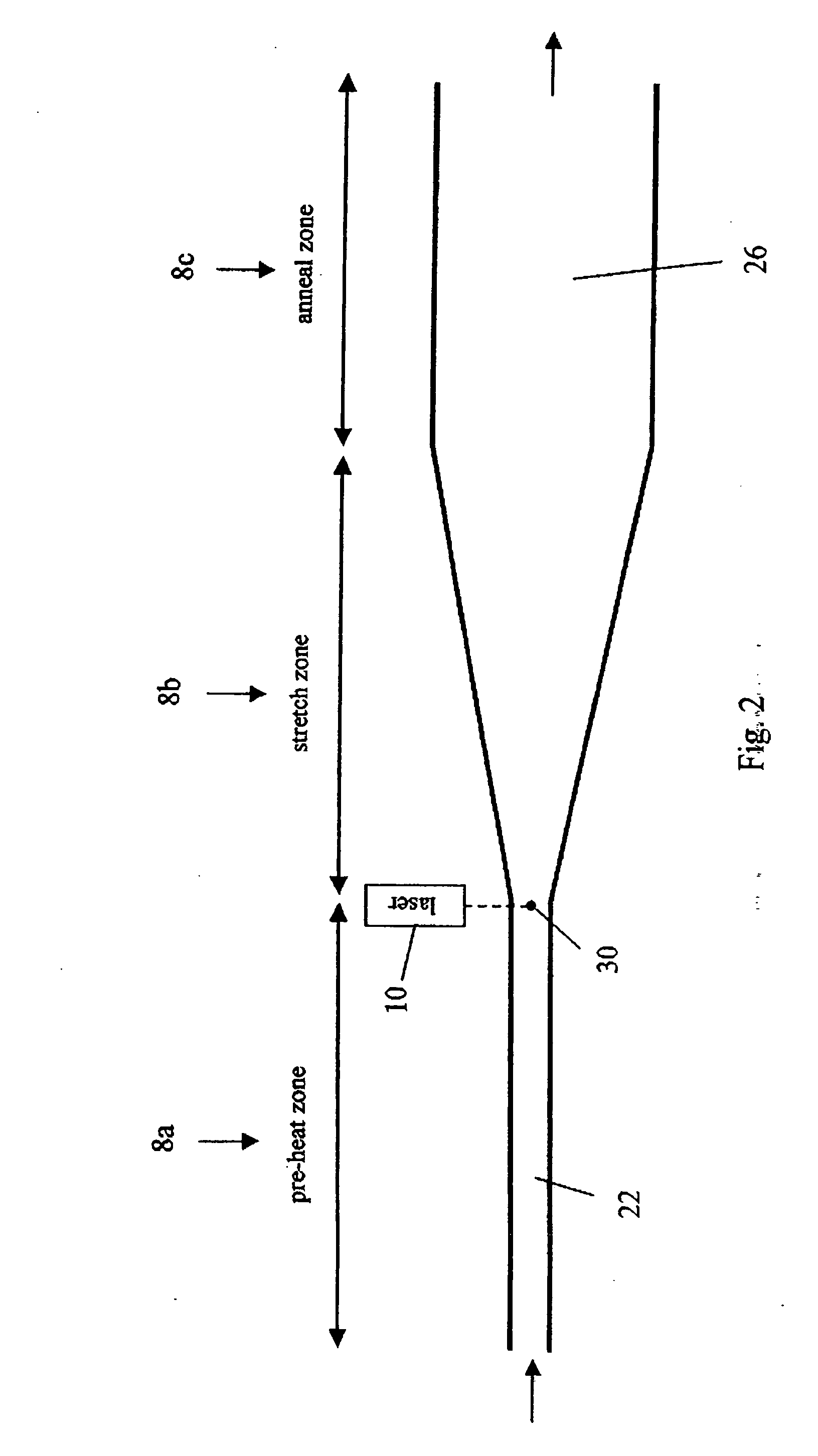Watermarked polymeric sheet
a polymeric sheet and watermark technology, applied in the field of watermarking polymeric sheets, can solve the problems of inability to include variable information or data, complex and time-consuming process, and indistinct watermarks, etc., to achieve wide commercial acceptance, improve ink laydown and adhesion, and reduce surface energy
- Summary
- Abstract
- Description
- Claims
- Application Information
AI Technical Summary
Benefits of technology
Problems solved by technology
Method used
Image
Examples
example 1
[0070] The following composition was used to produce Compound A (used in the production of the base material):
Parts byComponentWtRigidex TM 002 / 55 HDPE copolymer (MFI 0.2 g / 10 min100& density 0.955 Kg / m3, ex BP Chemicals Ltd)Rigidex TM HD6070EA HDPE (MFI 7.5 g / 10 min &17.6density 0.96 Kg / m3, ex BP Chemicals Ltd)Polystyrene Grade HF888 (ex BP Chemicals Ltd)4.8DERTOLINE TM MP 1706.0Cariflex TM TR1102 Styrene-butadiene-styrene copolymer0.6(ex Shell UK Ltd)Anhyd.CaCO3 (2.5 μ particle size, OMYA ex Craxton & Garry)21.0TiO2 (Rutile) RCR2 (ex Tioxide)5.8Armostat TM 400 (antistat, ex Akzo Chemicals Ltd)0.14Armostat TM 375D (antistat, ex Akzo Chemicals Ltd)0.35Caloxal TM CPA (CaO, ex Sturge Lifford Ltd)0.58Calcium Stearate (ex RTZ Chemicals Ltd)0.04Irganox TM 8215 (antiox., ex Ciba-Geigy Ind Ltd)0.29
HDPE = High density polyethylene
MFI = Melt flow index
[0071] Compound A was prepared from the above components as follows: Separate, melt blended, cooled and diced masterbatches (A1 and B) wer...
example 2
[0082] A composite co-extruded sheet was made using the same process and with the same composition as in Example 1. In this case, however, the laser was pulsed at a frequency of 500 Hz, with an on time of 1.6 ms and an off time of 0.4 ms. The angle of the laser was adjusted during operation, to cause lateral movement of the dot over the surface of the web (in the transverse direction).
[0083] The watermark produced by this process is shown in FIGS. 7, 8 and 9. As can be seen in FIG. 7, the watermark consists of a wavy line of dots running in the machine direction. The dots are closer together than in Example 1 and consist of elongate indentations in the surface of the web, having a width of about 3 mm and an average depth of about 18 μm. Magnified views of the indentations are provided in FIGS. 8 (by reflected light) and 9 (by transmitted light).
example 3
[0084] A composite co-extruded sheet was made using the same process and with the same composition as in Example 1. In this case, however, the laser 10 was mounted on a frame 40 above the oven and the laser beam 28 was directed onto the web using a scanner unit 42. The layout of the optical components was as shown in FIG. 10.
[0085] The laser 10 was mounted so that the laser beam 28 emerged in a direction parallel to the longitudinal axis of the oven. The beam was passed through a beam expander 44 and then reflected through 90° by a mirror 46 into the scanner unit 42, which was mounted above an access window 48 in the top wall of the oven. The scanner unit 42 was arranged to scan the laser beam in a transverse direction: i.e. perpendicular to the direction of travel of the web through the oven. The arrangement allowed for beam control, scanning and focusing of the beam onto the moving web. The beam expander 44 was adjusted to provide a spot size of 0.3-0.4 mm diameter on the surface...
PUM
| Property | Measurement | Unit |
|---|---|---|
| depth | aaaaa | aaaaa |
| depth | aaaaa | aaaaa |
| area | aaaaa | aaaaa |
Abstract
Description
Claims
Application Information
 Login to View More
Login to View More - R&D
- Intellectual Property
- Life Sciences
- Materials
- Tech Scout
- Unparalleled Data Quality
- Higher Quality Content
- 60% Fewer Hallucinations
Browse by: Latest US Patents, China's latest patents, Technical Efficacy Thesaurus, Application Domain, Technology Topic, Popular Technical Reports.
© 2025 PatSnap. All rights reserved.Legal|Privacy policy|Modern Slavery Act Transparency Statement|Sitemap|About US| Contact US: help@patsnap.com



